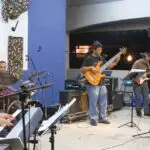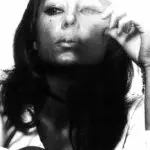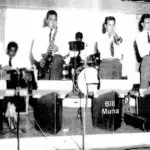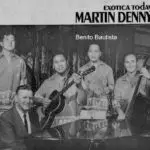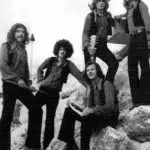Jazz
Table of Contents
Share This
Swiftly touched listening audiences
Innovative American art form
Jazz is a unique style of modern music. Remnants of jazz can be heard in several different styles of music. The origin of jazz is said to date back to the African-American experience that emerged in the early 20th century. Since then, it has evolved into what many now consider to be one of the most popular and innovative styles of music.
Much of early jazz was a combination of Ragtime and Blues (1900-1919), which evolved into the Swing and Big Band eras (1920s – 1950s). According to some early jazz musicians, Be-Bop (1940s) began, in part, as an “offshoot” of Swing musicians frustrated with the excessive Big Band refinement and ‘filtering.’
The Western Pacific rim was not at all immune to the musical influence of jazz before and after the liberation of Guam by the United States in 1944. Although there is a lack of written historical data to determine when jazz actually emerged on Guam, it is believed that local musicians were more than likely exposed to jazz due to the US military presence on the island prior to World War II.
As jazz swiftly touched listening audiences around the world, Guam’s jazz-listening audience grew a bit more slowly. In near contrast, there seems to have always been a remnant understanding of appreciation for this style of music on Guam. That remnant resides within the ranks of Guam’s local musicians.
It should be noted that jazz musicians on Guam, more often than not, are not solely jazz artists. Guam has been a melting pot of several different cultures for many years. The music listened to by local musicians varies from Latin, to Big Band, Country and Western, Jazz, Rock, Rhythm and Blues, Calypso, and several other styles.
The introduction of jazz on Guam: 1940s - 1950s
Guitarist and bassist Greg Tenorio, explained that the popular music style before World War II was mostly jazz and very little blues. Guam’s early jazz musicians played stringed instruments such as the banjo, ukulele, violin and guitar. Later, they were introduced to the wind instruments through the Navy Band. Johnny Chaco was one of the first musicians on Guam to form a band utilizing wind instruments.
Guitarist Norberto “Norbert” Tydingco said that the music that filtered out to the local people from the military was Glenn Miller and the old Big Band sounds of the 1930s and 1940s.
Guitarist Forrest Harris and others who were in their teens or early to mid-20s before World War II, including Patrick Palomo’s father, Joaquin or ‘Ding’ as he was called, Carlos Laguåña’s father, Carlos C. Laguana, John Blas, Jr.’s father, John Blas Sr., Joey Franquez’ father, Frank or ‘Ankie’ Franquez, and Danny Perez’ father, Josephat Perez, liked the jazz standards, picked it up and played it. Many local musicians got their first taste of jazz music during this Big Band era of the 194Os and 1950s.
After the 1944 Liberation of Guam the number of American military swelled on the island to as many as 100,000 for a few years as war was wrapping up in Asia. American bands were brought in for the military ‘R&R’ clubs, many of which welcomed local patronage. Vibes player Louie Gombar noted that the military brought musical acts to Guam from such big cities as Los Angeles to perform for three or four nights. Many of them were jazz units.
There were also civilian clubs such as The Suburban Club in Tamuning, the The Surf Club in Asan and Casino Garden in Tamuning, which featured live music by local musicians.
Forrest Harris recalled that during the 1940s there were many local party venues that demanded live music as well. They ranged from birthdays to fiestas and christenings keeping local musicians busy with work.
By the early 1950 guitarists such as Forrest Harris and Joaquin “Ding” Palomo were both influenced by the playing style of the late Barney Kessel, Charlie Parker and Dizzy Gillespie.
The music scene on Guam: 1960s - 1980s
In 1962, a local band known as the “The Downbeats” was started. This was a new generation of jazz musicians. “The Downbeats” played music similar to the style of the Tiajuana Brass. There were also imported musicians, like Guitarist Frank Cabral and Vibraphonist Louie Gombar, who came to Guam and decided to make the island their home.
Although Cabral plays jazz standards, he is also known for playing and singing Latin music. Cabral explained that there weren’t any jazz clubs on Guam at the time. Nobody could specialize. In the early sixties there were very few clubs. Tumon had none. Everybody was playing everything, the top forties, a lot of country, a lot of Latin, and cha cha.
In the early 1970s, jazz artists such as vocalist Patti Lane and flute player Roberto Fracassini emerged on the island’s music scene. Patrick Palomo recalls that there was a period when many European musicians/vocalists came to Guam. They would perform in Japan, and come to Guam to renew their visas for Japan. Lane and Fracassini were both active in this ‘East Asian musician-circuit’ in the late 1960s and early 1970s and later made Guam their permanent home.
Pianist Tommy Bejado said that throughout those years Guam had a lot of important European groups playing at the hotels in Tumon. They were considered fascinating to the local musicians as they were highly skilled and had an allure to them. Bejado remembered their new sound of which the musicians had not heard the like before.
Towards the late 1970s local jazz talent began to emerge. Carlos T. Laguåña, Patrick Palomo, Tommy Bejado, Linda Guerrero, Telo Taitague, Mike Di Amore, Sal Di Amore, Larry Franquez, Carlos Bordallo, Joey Franquez, and Danny Perez, are just some of Guam’s jazz artists who came on the music scene during this era.
Jazz was played across the airwaves on K-57 Radio by a jazz disc jockey Shelby Shapiro. D.J. Darryl Taggerty said the radio show began in 1977 and aired every Sunday night. It was called, ‘Jazz on the Seventh Day.’ Taggerty took over the show in 1989 when Shapiro left the island and has continued to play jazz to the present.
Jazz on Guam: 1990s- 2000s
Jazz on Guam continues to penetrate the contemporary music scene. Early generations of jazz musicians cannot be separated from young and budding jazz musicians. Their unique yet similar sounds intertwine and this interaction becomes the transition from which new and fresh forms of jazz music evolve. During Jazz Appreciation Month in 2004, Mico and Stevie Scott described the young jazz band “Fried Bananas” as bringing a breath of fresh air to the stage as they mixed in the different influences of younger jazz artists with the persuasion of the more experienced artists.
Many young musicians have been influenced and continue to be influenced by the earlier generations of jazz musicians such as Patrick Palomo. Patrick is doing what his father and those of past generations have done and that is to pass the torch of jazz and keep it burning. Patrick’s passion for music is undeniable and this passion continues to be influential in the lives of many young musicians.
Jazz is a kind of music that gives room for the musicians’ personal expressions and improvisation. Its uniqueness lies in the heart of the musician whose emotions and passion seem to resonate through their musical instruments. Cano Callazo-Cruz, who is the leader of the Latino-jazz band “Caliente,” passionately expressed his craft as the kind of music that is deep-seated.
Jazz is expected to remain an important part of Guam’s artistic history, adding to the collage of musical influences and reflecting the diversity of our island’s culture.
By The University of Guam’s Isla Center for the Arts and the Guam Humanities Council
Editor’s note: The photos and initial research for this entry is courtesy of Mico and Stevie Scott’s Jazz on Guam: An Oral History, a project funded by the Guam Humanities Council and in part by the National Endowment for the Humanities.

